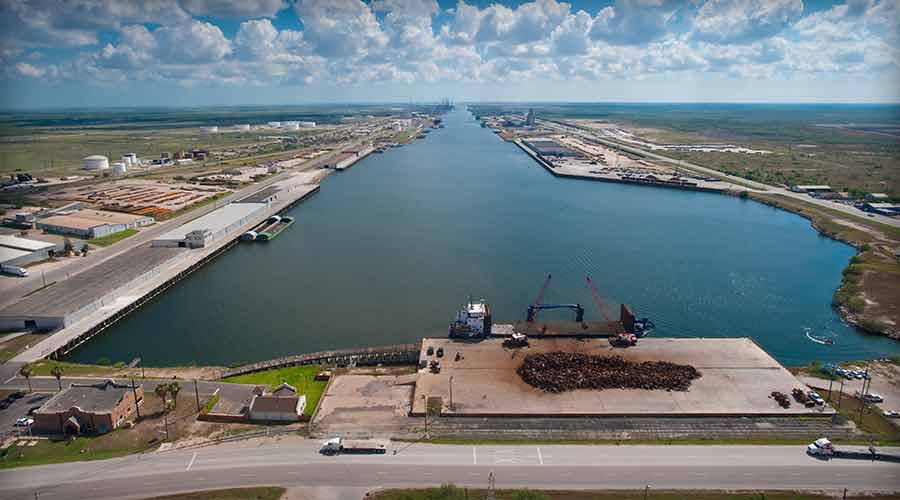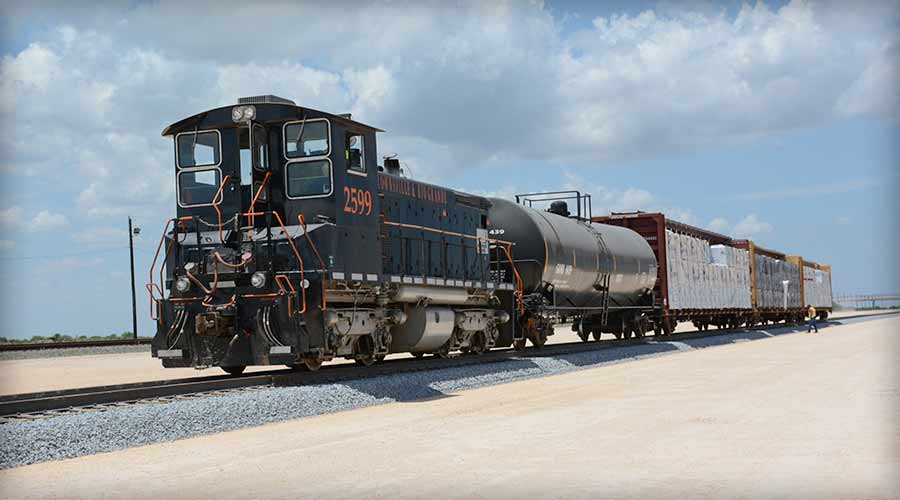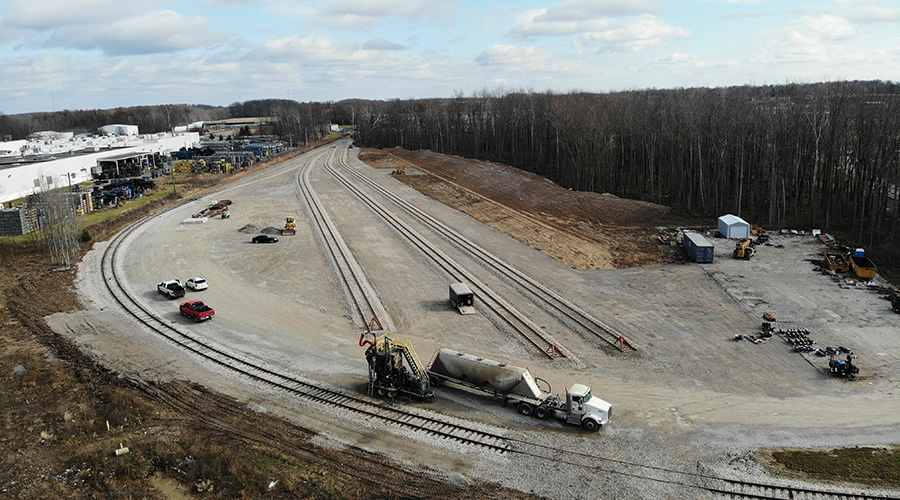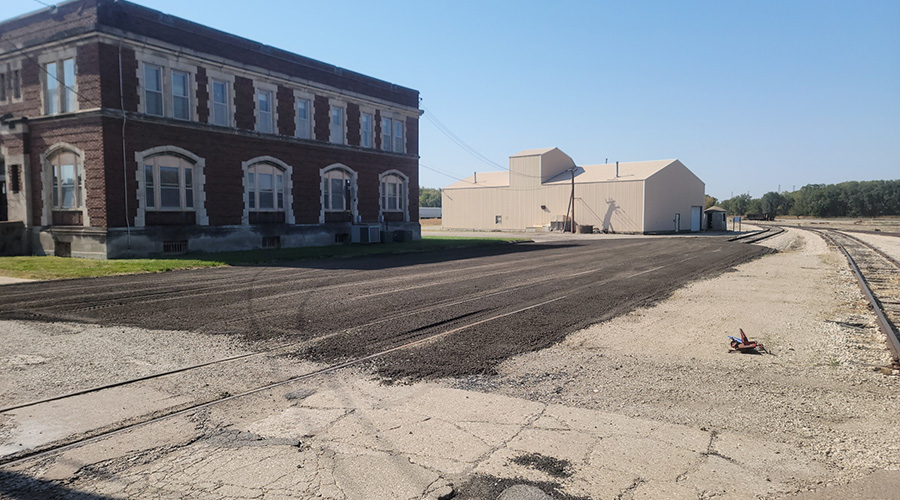Gonnella looks forward to charting BRG Railway's future
9/5/2023
By Julie Sneider, Senior Associate Editor
In his first four weeks as president of Brownsville & Rio Grande International Railway, Shariff Gonnella has gained a new appreciation for the complexity of railroading and the rail industry.
An experienced executive in global supply chain logistics, Gonnella was named BRG’s leader last month. He succeeds Norma Torres, who will retire at the end of this year.
Prior to joining BRG, Gonnella was an executive at Amazon, where he worked in global supply-chain management. He also served stints at Convoy Inc., Cargolux Airlines and Singapore Airlines. His BRG appointment is the first time he’s worked in the rail realm.
Gonnella says he was attracted to the BRG leadership position because of the opportunities presented by the Port of Brownsville’s Texas location and the critical role rail transportation plays in U.S.-Mexico trade.
Launched in 1984, the BRG operates 45 miles of rail line at the port on behalf of the Brownsville Navigation District (BND). The railroad interchanges with Union Pacific Railroad at Olmito Yard and Canadian Pacific Kansas City via an intermediate switch with UP at the Brownsville & Matamoros International Bridge.
 The BRG operates 45 miles of rail line at the port on behalf of the Brownsville Navigation District. OmniTRAX Inc
The BRG operates 45 miles of rail line at the port on behalf of the Brownsville Navigation District. OmniTRAX IncOperated by OmniTRAX Inc., the short line has experienced tremendous growth in recent years thanks to expansion at Brownsville, the only deepwater port directly on the U.S.-Mexico border. The port encompasses 40,000 acres, making it the largest land-owning public port authority in the country, port officials say.
That growth is expected to continue, particularly in the steel and energy sectors. In July, energy company NextDecade Corp. announced a positive final investment decision to construct the first three liquefaction trains (Phase 1) at the company’s proposed Rio Grande liquefied natural gas (LNG) terminal at the port. At 984 acres, it’s the largest proposed LNG export facility in the United States, according to port officials. Once fully operational, the terminal will consist of five trains with the capacity to export nearly 30 million tons per year.
“The Rio Grande LNG facility will be a true game-changer for our community, representing a generational achievement,” Port Director and CEO Eduardo Campirano said in a July press release. “Its impact will be enormous, significantly benefiting the energy industry of Texas."
Projects such as NextDecade are behind the port’s historic Brazos Island Harbor (BIH) Channel Improvement Project, which calls for deepening the 17-mile-long ship channel from 42 to 52 feet.
 The primary commodities BRG transports are metals and fuels. OmniTRAX Inc
The primary commodities BRG transports are metals and fuels. OmniTRAX IncIn June, Brownsville officials held a groundbreaking ceremony for the port’s latest economic development project: a 118-acre shovel-ready business park.
All that development can only help generate more business for BRG. Gonnella’s experience developing global infrastructure and international transportation strategies will help reshape the role the port plays in North America’s port capacity, OmniTRAX officials said when they announced Gonnella’s appointment.
“Texas has continued to shoulder record-breaking freight volumes — stretching shipping infrastructure capacity to its limits — and Brownsville offers global shippers the much-needed optionality and efficiency to reach worldwide markets,” OmniTRAX President and COO Sergio Sabatini said Aug. 1 in a press release. “Shariff’s vast experience creating international infrastructure capacity and his bold vision to transform the BRG into a dynamic, global freight gateway are the ideal skills to help us meet the ongoing demands of near shoring and international trade.”
The need for efficient global supply chain solutions is “at an all-time high” as Texas ports process some of the highest volumes in the United States, according to OmniTRAX officials. For example, freight processed this year at the Port of Laredo has eclipsed volumes at the ports of Los Angeles and Chicago, they added.
That puts the Brownsville port in prime position to relieve some of that capacity pressure at Laredo, which means BRG is poised to serve as a “critical international transportation artery” of shipping options for U.S. and Mexico imports and exports, according to OmniTRAX.
“The BRG presents a unique opportunity to create an unrivaled global gateway that redefines the very landscape of our industry,” Gonnella said when his hiring was announced.
Moreover, the trend of near-shoring — companies moving operations from overseas to Mexico — is continuing, further increasing the need for BRG and the port to serve as alternatives for moving freight more efficiently through the supply chain, Gonnella said in an interview.
“We do see a lot of investments being deployed into northern Mexico,” he said. “The Monterrey area, one of the main areas where this is happening, is where Tesla announced it plans to build a factory. And my former [employer] Amazon is investing in a huge fulfillment center in Monterrey area, as well.”
BRG’s traffic has grown exponentially — nearly 60% over the past five years, according to Gonnella. It logged 46,000 carloads in 2018 and likely will reach 80,000 carloads by the end of this year. Metal products and fuels are the primary commodities that BRG transports.
That traffic growth path is expected to continue over the next couple of years, he added.
“One of my main goals coming in is to assess what are our current opportunities and future opportunities so we can do the proper planning and capital investment needed to cope with the demand that we’re going to see,” Gonnella said. “There are projects that are going to be happening in the next couple of years.”
Part of his assessment will entail ensuring the level of rail infrastructure and services necessary to meet demand, particularly in the energy and steel sectors. Potential investment could be in new rail lines so that trains can travel directly to customers’ facilities, he added.
His experience in other transportation and supply-chain services will bring a different perspective to BRG’s operations, Gonnella believes.
“I’m coming in with fresh eyes and will be able to share best practices from other industries and bring the railroad to the next level,” he said.
He acknowledged he has more to learn about railroading.
“I will say that I have great respect for the rail industry; I didn’t know it was as complex as it is,” he said. “It’s just a different mode of transportation, but the complexity involved has me humbly [realizing] I have more to understand about this beautiful part of the supply chain and how vital it is.”


